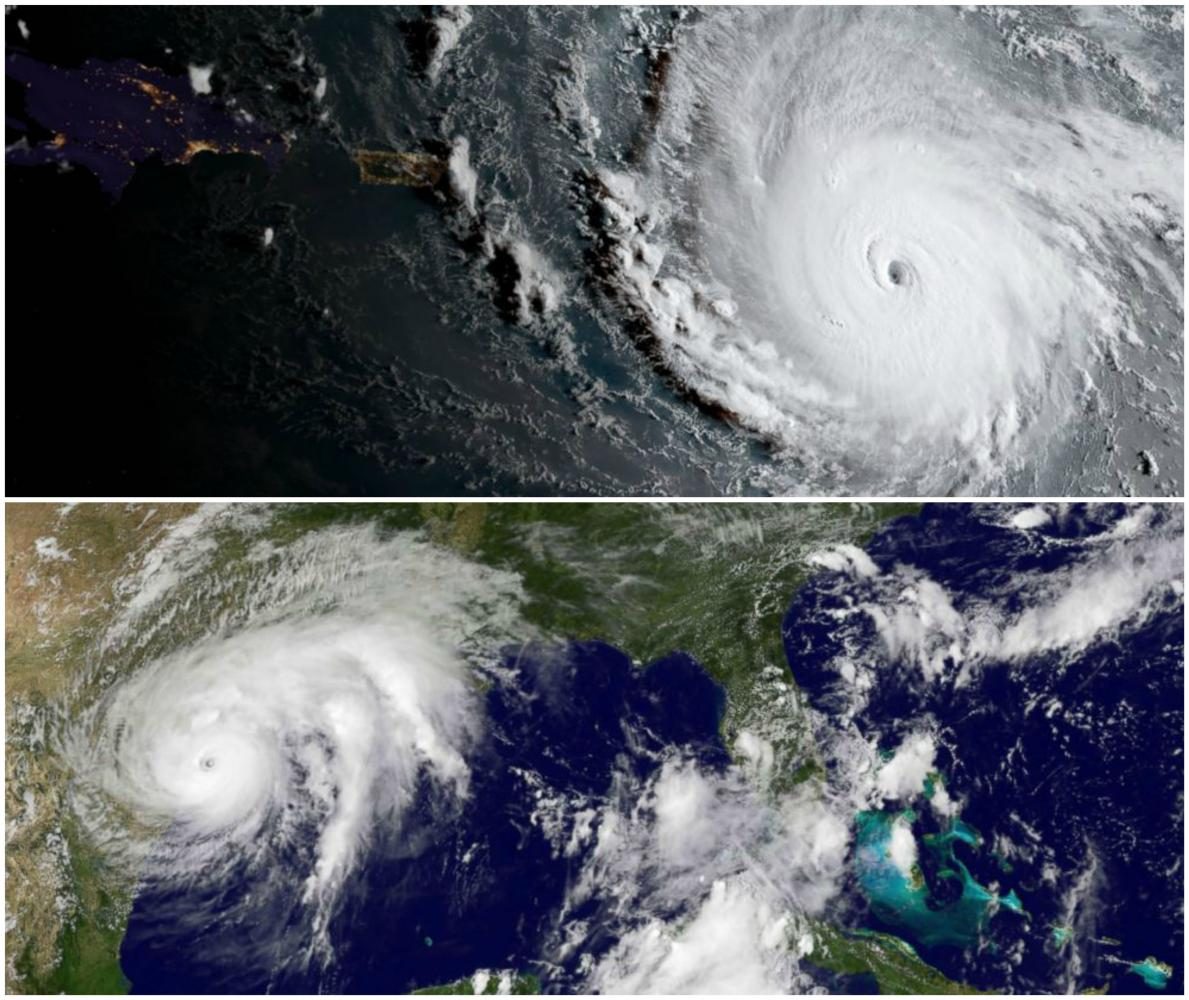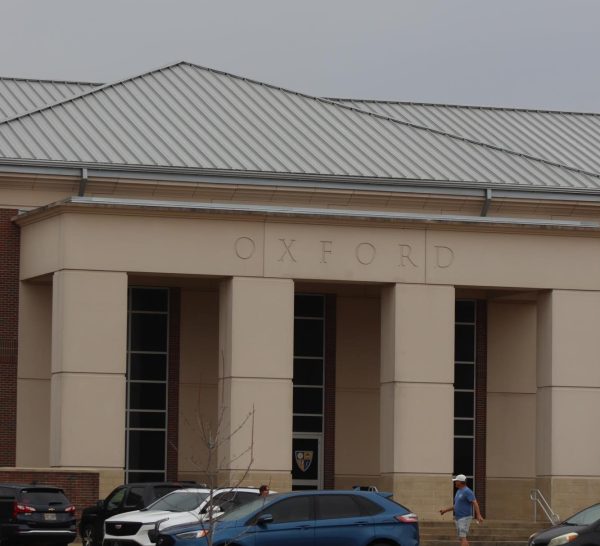Hurricanes hit the Atlantic, students encouraged to donate
Satellite pictures of Harvey and Irma show the magnitude of the storms. The two storms could cost 290 billion dollars total in damages.
September 15, 2017
On Aug. 25, Hurricane Harvey, a Category 3 hurricane, made landfall. Harvey took 71 lives and was the third costliest Atlantic hurricane in history. However, Harvey was just the beginning.
Atlantic hurricane season begins in June and ends in November, with August and September being the peak season. 2017’s hurricane season ended the 12 year drought of major hurricanes in the U.S., the last ones being Katrina and Wilma in 2005.
Freshman Jackson Scruggs’ aunt and uncle got hit by Hurricane Katrina and know what it’s like to be affected by such a great storm.
“For one, all of their houses are near the ocean, like right on the beach boulevard, so all their houses were destroyed,” Scruggs said. “They moved up here for the time being before they could get insurance coverage on their houses.”
Those facing the coming hurricanes today may soon be faced with similar problems. After building up in the Atlantic Ocean, Hurricane Irma made landfall on Sunday, Sept. 10, in Key West, Fl. Irma ripped through the Caribbean and killed 25 people. Harvey and Irma mark the first time the Atlantic has seen two Category 4 hurricanes in the same year.
Right behind Irma are Hurricanes Jose and Katia. Jose reached Category 4 on Friday, Sept. 8, but it is expected to miss the U.S. completely. Hurricane Katia made landfall in Mexico also on Sept. 8 and has killed two people.
While hurricanes tear through the Atlantic, people are looking for ways to help. The most popular place for donations is the Red Cross. The Red Cross has set up shelters in Houston and evacuation sites in North Carolina for hurricane victims and provided 246,000 relief items to Americans affected by Harvey.
“My uncle and aunt, in the first week after the storm, got food from Red Cross before they came up here to Oxford,” Scruggs said.
Although, the Red Cross has been under fire lately from the media and Houston Councilman Dave Martin. According to the Houston Chronicle, Martin called the organization “inept” and implored residents to donate somewhere else. Martin wasn’t the only one to comment on the Red Cross. County Judge Ed Emmett got help locally because he did not trust the Red Cross.
“I’ve heard a lot of negative information about them [the Red Cross] the last weeks, especially because of Hurricane Harvey,” Key Club Sponsor Tuesday Arizaga said.
Jennifer Stewart, OHS teacher Kim Austin’s sister, went to Houston, Texas to provide relief to her sister, Amy, and those affected. Stewart sees it as “paying it forward” to her sister, who helped her recover after Hurricane Katrina. To drop off donations, visit room A209 or A124.
“Anything they could spare that could be useful to the victims of the hurricane, they would appreciate it,” Arizaga said.
The aftermath of this hurricane is going to be billions in damages and will leave many homeless. Any way students can get involved will help those in need.
“This is really important because you never know when a tragedy could happen to you,” sophomore Olivia Austin said.
If students want to donate, here is a list of where they can.
– Convoy of Hope (https://www.convoyofhope.org/donate/hurricaneirma/)
– Catholic Charities USA (https://catholiccharitiesusa.org/)
– Hurricane Harvey Relief Fund (https://ghcf.org/hurricane-relief/)
– UNICEF (https://www.unicefusa.org/donate/help-children-affected-hurricane-irma/32787)














